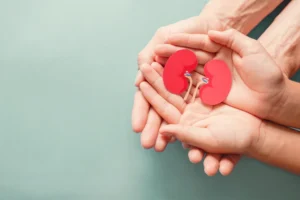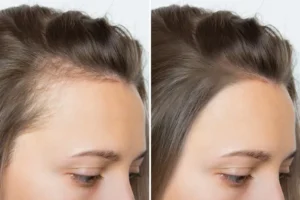
Sweating is a natural bodily function that helps regulate our body temperature. However, for some individuals, the body produces an excessive amount of sweat, regardless of temperature or physical activity. This condition, known as hyperhidrosis, can be extremely uncomfortable and distressing for those affected.
Hyperhidrosis is more common than you might think. In fact, it’s estimated that up to 5% of the population may suffer from this condition. If you’re experiencing excessive sweating, know that you’re not alone, and there are effective treatments available.
- Diagnostic Criteria: Recognizing Hyperhidrosis
- What Causes Hyperhidrosis? Understanding the Science Behind Excessive Sweating
- Treatment Options: Managing Hyperhidrosis Effectively
- Advanced Treatment Options for Severe Hyperhidrosis
- Living with Hyperhidrosis: Coping Strategies and Self-Care
- The Importance of Professional Care
Diagnostic Criteria: Recognizing Hyperhidrosis
To diagnose hyperhidrosis, healthcare professionals look for specific criteria. Understanding these can help you determine if you should seek medical advice:
- Onset typically occurs before the age of 25
- Visible sweating persists for at least 6 months
- Sweating is bilateral, affecting both sides of the body (e.g., both armpits, both palms, or both soles of the feet)
If you notice these signs, it’s important to consult with a healthcare provider for a proper diagnosis and treatment plan.
What Causes Hyperhidrosis? Understanding the Science Behind Excessive Sweating
Our bodies are covered in sweat glands that play a crucial role in maintaining our health. These glands help control body temperature, remove excess electrolytes, and eliminate excess fluids. The sweat glands are connected to our sympathetic nervous system, which controls many of our involuntary bodily functions.
In people with hyperhidrosis, the number and size of sweat glands are typically normal. However, these glands are overly sensitive to signals from the brain, resulting in the production of excessive amounts of sweat. This oversensitivity is what leads to the uncomfortable symptoms of hyperhidrosis.
It’s worth noting that certain medications can also trigger excessive sweating. These may include:
- Some antidepressants
- Certain anti-diabetic medications
- Estrogen blockers
If you’re experiencing excessive sweating and are taking any medications, it’s crucial to review your medication list with your doctor. In some cases, modifying or changing medications may help improve your symptoms.
Treatment Options: Managing Hyperhidrosis Effectively
Fortunately, there are several effective treatments available for hyperhidrosis. The right treatment for you will depend on the severity of your condition and your individual needs.
Prescription Antiperspirants
For mild to moderate hyperhidrosis, prescription antiperspirants can be highly effective. Products like Drysol or Xerac are available by prescription and can significantly reduce sweating. It’s important to note that similar products available online or over-the-counter are often counterfeit and ineffective. Always consult with a healthcare provider to obtain genuine, prescription-strength antiperspirants.
Topical Medications
A newer treatment option is Qbrexa, a topical medication containing 2.4% glycopyrronium. This treatment involves applying a pre-moistened cloth to the affected area (typically the underarms) once daily. The solution works by inhibiting neurotransmitters on the sweat glands, effectively reducing sweat production.
Neurotoxin Injections
If antiperspirants and topical medications aren’t providing sufficient relief, neurotoxin injections like Botox may be recommended. The typical dosage is 50 units in each armpit, administered through 10 to 20 injections spaced about 1 cm apart. Most patients notice a significant reduction in sweating within two weeks of treatment.
Advanced Treatment Options for Severe Hyperhidrosis
For those with more severe or persistent hyperhidrosis, there are additional treatment options available:
Microwave Thermolysis
A recently approved treatment called Miradry uses microwave technology to destroy sweat glands in the underarm area. This non-invasive procedure typically requires 2-3 sessions for optimal results. While it’s a more aggressive approach, it can provide long-lasting relief for those with severe underarm sweating.
Iontophoresis
This treatment is particularly effective for hyperhidrosis affecting the palms and soles of the feet. During an iontophoresis session, patients immerse their hands or feet in shallow trays filled with water. A small electrical current is then passed through the water for 15 to 40 minutes, depending on the device used. This treatment can significantly reduce sweating in these areas.
Oral Medications
In some cases, oral medications like glycopyrrolate and oxybutynin may be prescribed to reduce sweating. However, these medications can have significant side effects and are generally not the first line of treatment when safer, more targeted therapies are available.
Living with Hyperhidrosis: Coping Strategies and Self-Care
While seeking medical treatment is crucial, there are also steps you can take in your daily life to manage hyperhidrosis:
- Choose breathable, moisture-wicking fabrics for your clothing
- Use absorbent shoe insoles and change socks frequently
- Apply antiperspirant at night for better absorption
- Practice stress-reduction techniques, as stress can trigger sweating
- Stay hydrated to help regulate your body temperature
Remember, hyperhidrosis is a medical condition, not a hygiene issue. Don’t let embarrassment prevent you from seeking help.
The Importance of Professional Care
Hyperhidrosis can significantly impact your quality of life, affecting your confidence, social interactions, and even your career. However, with proper diagnosis and treatment, most people can find relief from their symptoms.
If you’re struggling with excessive sweating, we encourage you to schedule a visit with your doctor. A healthcare professional can assess your symptoms, discuss these different treatment options, and work with you to develop a personalized treatment plan.
Living with hyperhidrosis can be challenging, but you don’t have to face it alone. With the right support and treatment, you can manage your symptoms effectively and regain your confidence. Remember, seeking help is the first step towards finding relief and improving your quality of life.




